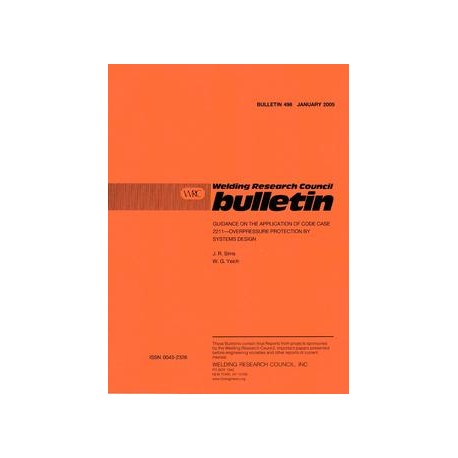Cart
0
Product
Products
(empty)
No products
To be determined
Shipping
$0.00
Total
Product successfully added to your shopping cart
Quantity
Total
There are 0 items in your cart.
There is 1 item in your cart.
Total products
Total shipping
To be determined
Total
 View larger
View larger
WRC 498
M00002327
New product
WRC 498 Guidance on the Application of Code Case 2211 - Overpressure Protection by Systems Design
Bulletin / Circular by Welding Research Council, 2005
J. R. Sims, W. G. Yeich
In stock
More info
Full Description
To protect pressure vessels from the potential for pressures in excess of values used in the design process, industries and ASME Code rules have traditionally used pressure relief devices. The device is installed at an effective location in the pressurized vessel system and is designed to open when the vessel pressure exceeds the relief pressure specified for the device. This overpressure design feature provides dependable protection for many vessels and systems. For vessels operating with hostile or corrosive fluids and environments, the pressure relief device may, over time, plug the inlet or outlet thereby causing the pressure relief device to be inoperative. To address this and other issues, alternatives to pressure relief devices were sought.Starting with Code Case 2211 in mid-1996 and Code Case 2211-1 three years later, ASME approved an acceptable alternative for Section VIII, Division 1 and 2 pressure vessels. This alternative to pressure relief devices uses the concept of overpressure protection by system design. In the implementation phase of the approved alternative, it was soon found that additional guidelines were needed to properly and more uniformly apply the technical requirements specified in the code case.
In 1998, PVRC prepared a Request for Quote, evaluated potential investigators and initiated a development activity in mid-2000. The PVRC development activity culminated in this report, which provides detailed guidelines for owners, users and regulators in the implementation of Code Case 2211-1. More specifically, this report provides guidelines for conducting a detailed, organized, systematic, multidisciplinary analysis to ensure that the maximum allowable working pressure of the vessel is greater than the highest pressure that can reasonably be expected from all credible operating and upset conditions. Illustrative examples are included. These examples are typical of those employed in petroleum refining, chemical, pulp and paper industries and other similar process plants.

